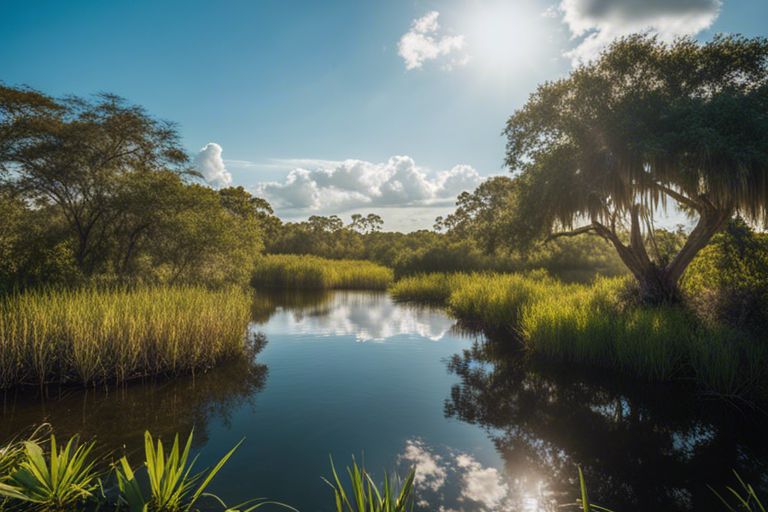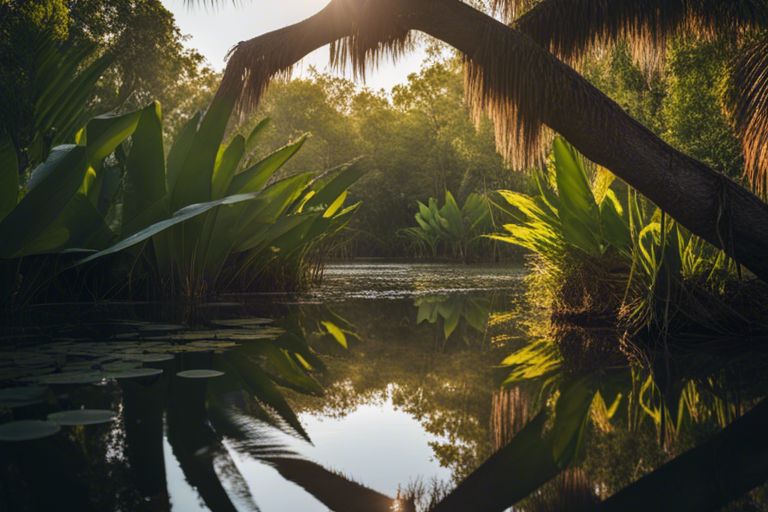Your cart is currently empty!

What Is The Best Time Of Year To Witness The Everglades' Majestic Wildlife?
This diverse ecosystem in South Florida boasts a rich array of wildlife that captivates visitors from around the world. If you’re planning a trip to the Everglades and hoping to catch a glimpse of its majestic creatures, timing is key. Throughout the year, different seasons offer unique opportunities to observe the wildlife in their natural habitat. From stunning birds like herons and egrets to the magnificent American alligator, each season brings its own highlights. To make the most of your visit and increase your chances of spotting these iconic animals, it’s essential to choose the best time to explore the Everglades.
Seasons of the Everglades
The Everglades National Park in Florida offers visitors a diverse array of wildlife sightings throughout the year, thanks to its unique ecosystem and varying seasons.
Dry Season Splendors
Everglades National Park is most popular during the dry season, which typically runs from November to March. This time of year is ideal for wildlife enthusiasts looking to spot alligators, wading birds, and other iconic species in the park’s shallow waters. The cooler temperatures and lower water levels make animals more visible, creating excellent opportunities for photography and observation.
During the dry season, visitors can explore the park’s trails, boardwalks, and observation towers with ease, enjoying the lush vegetation and abundance of wildlife. Be sure to bring binoculars and a camera to capture the beauty of the Everglades in its prime.
Wet Season Wonders
Splendors. The wet season in the Everglades, from June to November, offers a completely different experience for visitors. While the park may be less crowded during this time, the wet season provides opportunities to witness dramatic displays of nature, such as the blooming of wildflowers, increased bird activity, and the chance to see elusive species like the American crocodile in their natural habitat.
Plus, the wetlands come alive with vibrant colors and teeming with life, making it a paradise for nature lovers and photographers seeking unique and breathtaking scenes. Just be prepared for sudden rain showers and be sure to pack insect repellent to ward off the park’s notorious mosquitoes.
Wildlife Highlights by Season
Obviously, the Everglades offer different wildlife viewing opportunities throughout the year, with each season bringing its own unique highlights. From winter to autumn, visitors can witness the majestic wildlife in various stages of life and behavior.
Winter Wildlife Expeditions
Highlights of winter wildlife expeditions in the Everglades include spotting alligators basking in the sun, wading birds foraging in the shallow waters, and manatees seeking out warmer areas in the cooler months. The dry season makes wildlife easier to spot, as they congregate around the limited water sources.
Winter is also an excellent time for birdwatching, as many migratory birds make the Everglades their temporary home. Visitors can witness a diverse array of bird species, from colorful warblers to majestic birds of prey soaring above the sawgrass prairies.
Spring: The Birthing Season
Birthing season in the Everglades, which occurs in spring, offers a unique opportunity to witness the arrival of new life in the ecosystem. Alligators, birds, and other wildlife give birth to their young during this time, providing a heartwarming spectacle of motherly care and offspring exploration.
Any nature enthusiast visiting the Everglades during spring should keep an eye out for baby animals learning to navigate their surroundings, from tiny hatchlings to fluffy chicks taking their first steps. It’s a magical time of year that highlights the resilience and beauty of the Everglades wildlife.
Summer’s Heat and Habitat
The summer months in the Everglades bring intense heat, challenging both wildlife and visitors. While larger mammals may seek shelter in the shade during the hottest parts of the day, reptiles like snakes and alligators are more active. Visitors can witness these fascinating cold-blooded creatures thriving in their natural habitat.
The wet season in summer also transforms the landscape, creating temporary wetlands that attract a variety of bird species and aquatic life. Exploring the Everglades during this time offers a unique perspective on how wildlife adapts to the changing conditions of their environment.
Autumn: Migration and Transition
Transition is the key theme in autumn as the Everglades wildlife prepares for the upcoming dry season. Migratory birds start their journey south, while resident animals adjust to the changing food sources and water levels. This period of transition showcases the interconnectedness of the Everglades ecosystem.
Expeditions in autumn provide a glimpse into the dynamic nature of the Everglades, with various species adapting to the shifting environmental conditions. From the rustling of fallen leaves to the calls of migrating birds, visitors can witness the beauty of this seasonal shift in the wildlife-rich landscape.
Planning Your Visit
Not sure when to plan your visit to the Everglades to witness its majestic wildlife? Here are some factors to consider:
Factors to Consider
1. Season: The Everglades experiences distinct seasons that affect wildlife sightings. Winter months are ideal for bird-watching, while summer brings out the reptiles and insects.
2. Weather: Be aware of the weather conditions during your visit. Some wildlife may be more active during cooler or wetter days.
- Knowing the patterns of wildlife behavior can help you plan your visit accordingly.
Tips for a Successful Wildlife Experience
Your Everglades wildlife experience can be truly memorable with these tips:
1. Hire a local guide: Local guides are knowledgeable about the best spots and times to see wildlife, increasing your chances of sightings.
2. Be patient and observant: Wildlife sightings can be unpredictable, so patience is key. Take your time to observe your surroundings quietly.
- After all, good things come to those who wait.
To enhance your wildlife experience, consider bringing a pair of binoculars for a closer look at the creatures in their natural habitat.
- After all, a successful wildlife experience is all about preparation and appreciation.

To wrap up
Following this exploration of the Everglades’ wildlife throughout the seasons, it becomes clear that the best time of year to witness its majestic inhabitants is during the dry season, from November to March. This period offers optimal conditions for spotting a variety of wildlife, from alligators basking in the sun to vibrant birds soaring through the skies. While each season in the Everglades has its own unique charm, the dry season stands out as the prime time for encountering the diverse and awe-inspiring wildlife that calls this unique ecosystem home.
FAQ
Q: When is the best time of year to witness the Everglades’ majestic wildlife?
A: The best time of year to witness the Everglades’ majestic wildlife is during the dry season, which runs from late November through early April. This is when water levels are lower, making it easier to spot wildlife congregating around the remaining water sources.
Q: What kind of wildlife can be seen in the Everglades during the best time of year?
A: During the dry season, visitors to the Everglades can expect to see a wide variety of wildlife, including alligators, wading birds like herons and egrets, turtles, and even the elusive Florida panther. This is also a great time to witness migratory birds that visit the area.
Q: Are there any special tours or activities recommended for experiencing the Everglades’ wildlife during the best time of year?
A: Yes, to enhance your wildlife viewing experience in the Everglades during the dry season, consider taking an airboat tour or a guided nature walk. These tours are led by knowledgeable guides who can help you spot and learn about the different species of wildlife that call the Everglades home.
Leave a Reply